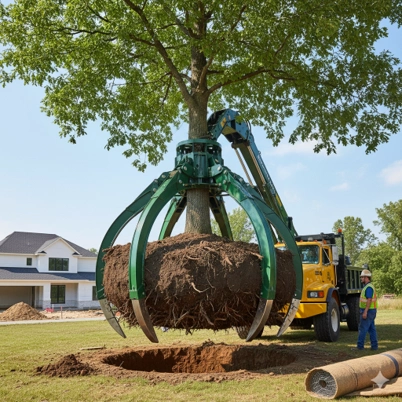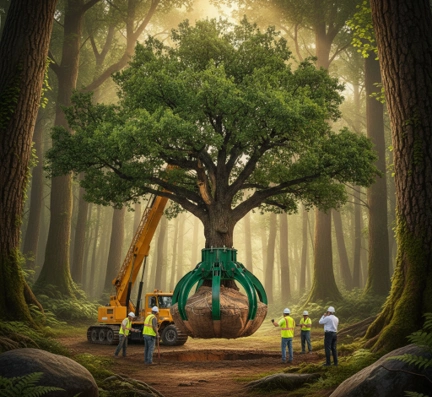STEM Education
- Home
- STEM Education
Tree transplantation, or tree relocation, is the process of moving a large, established tree from one location to another. It’s an alternative to cutting down a tree, allowing mature trees to be preserved in new settings.
- A specialized machine called a tree spade or manual labor is used to dig out the tree. The roots and soil surrounding them (the root ball) are kept intact and often wrapped in burlap or a steel basket for stability.
- The tree is replanted at the correct depth, the pit is backfilled with soil, and the tree is watered heavily. Intensive aftercare, including staking, regular watering, and monitoring for stress, is crucial for the tree’s long-term survival.

Advantages of Tree Transplantation
- Instant Maturity and Aesthetic Value: This is perhaps the most significant advantage. Instead of waiting decades for a newly planted sapling to grow, transplantation provides an immediate, mature landscape. This offers instant shade, a sense of establishment, and significant visual appeal, which is invaluable in new developments, large landscaping projects, or areas where quick aesthetic impact is desired.
- Environmental Benefits (Immediate Impact):
- Oxygen Production and Carbon Sequestration: A large, transplanted tree immediately contributes to oxygen production and absorbs a substantial amount of carbon dioxide from the atmosphere, providing immediate environmental benefits that small saplings cannot.
- Habitat Preservation: It preserves established habitats for local wildlife, including birds, insects, and small mammals, which would be disrupted if the tree were cut down.
- Stormwater Management: Mature trees are much more effective at intercepting rainfall, reducing stormwater runoff, and preventing soil erosion compared to young trees.
- Preservation of Genetic Legacy and Heritage: Old or unique trees often have historical or sentimental value. Transplantation allows for the preservation of these heritage trees and their unique genetic makeup, maintaining a link to the past that would be lost if they were removed.
- Increased Property Value: Mature trees significantly enhance property value and curb appeal. Transplanting established trees to a new or redeveloped site can immediately boost the perceived value and desirability of the property, contributing to a quicker return on investment for developers.
- Shade and Temperature Regulation: Large trees provide extensive shade, which is crucial in urban environments. This helps to reduce the urban heat island effect, lowers air conditioning costs for nearby buildings, and creates more comfortable outdoor spaces immediately.
- Reduced Waste: By moving a tree rather than felling it, less green waste is generated, contributing to more sustainable development practices.
Come, get involved in this noble cause of saving fully grown trees and giving them a new life


